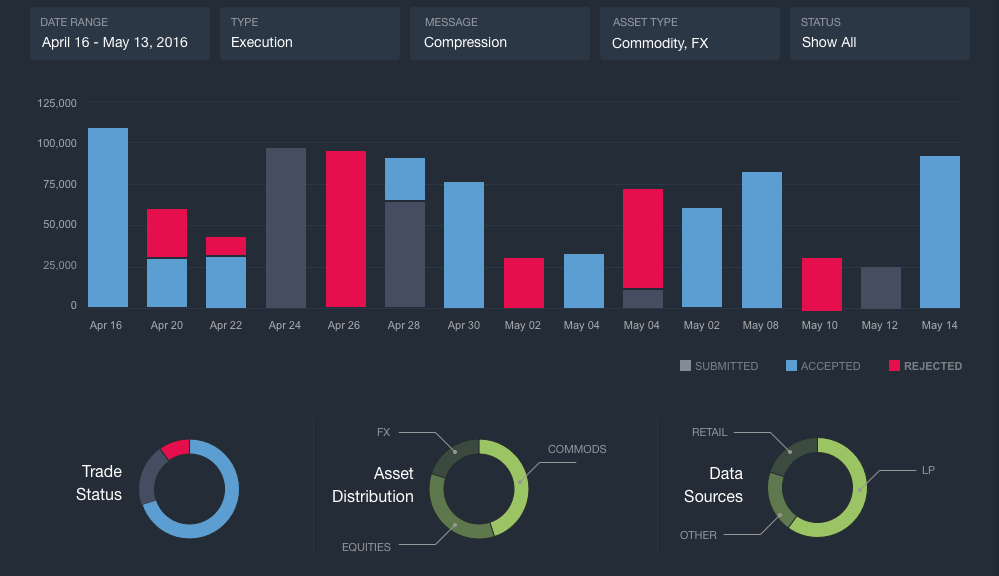
MiFID II – How it effects non-EU financial firms
MiFID II is hitting the EU in January 2018. But if you are a financial firm and aren’t based in the EU, you shouldn’t worry, right?
Well, not quite, while MiFID II is an EU based directive, it has ramifications that are going to affect financial companies from around the globe.
Below are some of the key topics non-EU firms need to keep in mind as MiFID II comes into effect next year.
No LEI, no trading
Legal Entity Identifiers (LEIs) were created as a global standard for companies involved with financial transactions. The twenty character alpha-numeric code structure was put in place in 2012 in order to have a global system for companies around the world to report the underlying counterparties of their transactions.
They are important for MiFID II, as the rules require EU based financial firms such as banks, asset managers and trading venues to have an LEI to place trades. In addition, their counterparties will also require LEIs.
For non-EU firms, this means that companies such as asset managers that trade with an EU based bank, will need to acquire an LEI code to continue that relationship in 2018.
Luckily, getting an LEI is fairly simple. Firms around the world can register for an LEI with any of the 30+ Local Operating Units (more about LEIs and registering for one).
On the downside, there is a cost involved with registered for an LEI. Also, firms with many legal entities such as fund companies, will need to register each individual entity. In addition, the registration is required to be renewed annually which incurs ongoing expenses to retain the LEI.
Available liquidity of EU counterparties may change
One of the implementations of MiFID II affecting EU firms are position limits for over the counter (OTC) commodity derivatives. With the position limits, dealers of these products may find themselves in periods where they can’t fill additional trades for clients.
A result is that non-EU firms trading with EU companies may face liquidity crunches if positions limits are hit. In this situation, their EU counterparties for OTC commodity derivatives won’t be available to fill their orders.
Personal information requirements
 Arguably the most invasive change of MiFID II is the requirement of seller and buyer personal details for Transaction Reporting. Under the new rules, EU companies such as banks and brokers will need to report personal identification details of the trader on their staff that executed the trade. In addition, they will need to collect buyer information of their clients and include it in their transaction reports that are submitted to an Approved Reporting Mechanism (ARM) or National Competent Authority (More on ARMs).
Arguably the most invasive change of MiFID II is the requirement of seller and buyer personal details for Transaction Reporting. Under the new rules, EU companies such as banks and brokers will need to report personal identification details of the trader on their staff that executed the trade. In addition, they will need to collect buyer information of their clients and include it in their transaction reports that are submitted to an Approved Reporting Mechanism (ARM) or National Competent Authority (More on ARMs).
As part of these requirements, non-EU firms as well as private individuals will be required to submit personal details such as nationality and passport numbers to their EU counterparts. The personal details will then be included in trade reports that are made available to regulators.
Trading venue requirements
Another major change of MiFID II is an expansion of what is deemed a trading venue and products that are required to be traded on them. Operating a trading venue requires near real time trade reporting to be submitted to an Approved Publication Arrangement (APA).
A result of this change in regulation are higher expenses by trading venues to handle the requirements. In addition, many products that now can be traded OTC, will find themselves on trading venues.
For non-EU firms, there are three items to consider with these trading venue changes:
- Will costs associated with the venue increase and can I find a non-EU venue or counterparty that is more efficient?
- Do I have an EU based trading network that will be deemed a trading venue under MiFID II and require new reporting requirements?
- Do I want to expose my trades to them being published to an APA?
Non-EU liquidity hubs
Due to the additional disclosure information required by EU firms, potential liquidity crunches and trading venue costs, many in the financial industry believe that there will be new liquidity hubs created to cater to non-EU customer. These trading venues would be similar to those based in the EU, but domiciled out of the EU. In addition, the underlying execution technology and liquidity providers of the EU and non-EU could be similar.
For non-EU firms, there are two major opportunities. Firstly, non-EU firms that operate or are in the process of setting up liquidity hubs, may be able to attract their fellow non-EU traders away from EU based trading venues, banks and brokers. Secondly, with the expectation that MiFID II will increase non-EU liquidity opportunities, non-EU buyside firms will gain more choices of where to trade.
Execution transparency competition
While it was previously stated that non-EU firms have some advantages on their EU counterparts, the opposite is also true.
How about a case where a German asset manager is trading Australian Dollar swaps with both a UK and Australian bank. Can they still trade with the Australian bank?
The answer is yes, but here are where things get interesting.
 Beyond MiFID II requiring an abundance of transaction reporting data, there are also new investor protection rules being put in place. With them, asset managers need to disclose to their underlying clients information on commissions they pay to execute trades and research related expenses. In addition, banks and brokers are required to publish Best Execution data related to how they are pricing clients.
Beyond MiFID II requiring an abundance of transaction reporting data, there are also new investor protection rules being put in place. With them, asset managers need to disclose to their underlying clients information on commissions they pay to execute trades and research related expenses. In addition, banks and brokers are required to publish Best Execution data related to how they are pricing clients.
EU banks will be providing their customers execution quality reports
Since EU based banks are required to publish execution information to their clients, this information makes it easier for EU asset managers and fund companies to prepare their own disclosure reports. Back to the example above, the Australian bank is at a competitive disadvantage to the UK bank if they aren’t also providing reports that can assist the German asset manager to comply with their MiFID II requirements.
The Australian bank could counter with more favorable rates or provide similar execution information to the asset manager, they are vulnerable to losing the German firm’s business if they stand still.
Things to consider
As January 2018 closes in on the financial industry, the reality is that both EU and non-EU financial firms have decisions to make when MIFID II goes into effect.
Like any period of change, MiFID II brings both opportunities and challenges. For non-EU firms, understanding what’s at stake allows time for preparation and adaption to the new reality of trading.
Looking for help with MiFID II? Cappitech is ready with Trade/Transaction Reporting and Best Execution technology to help reduce your stress and seize the coming opportunities.




